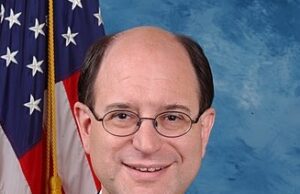Green Home Building Continues to Flourish; Passes 10,000 LEED-certified Home Milestone
Residential community uses LEED for Homes certification to differentiate as the best in the market
Washington, DC – April 5, 2011 – (RealEstateRama) — More than 10,000 homes across the U.S. have earned LEED certification through the LEED for Homes program, according to the U.S. Green Building Council (USGBC). LEED-certified home projects span the residential market, from multi- and single-family, to market rate and affordable housing.
“Reaching this milestone signifies the continued transformation of the home building industry towards high-performing, healthy homes that save home owners money,” said Nate Kredich, Vice President of Residential Market Development, U.S. Green Building Council. “Market leaders across the production, multifamily, affordable and custom home segments have recognized that there are green homes, and then there are LEED Homes, and they are acting accordingly.”
LEED for Homes is a national voluntary certification system that promotes the design and construction of high-performance green homes that use less energy and water and fewer natural resources; create less waste; and are healthier and more comfortable for the occupants. Since its launch in 2008, 10,161 homes have certified with over 38,000 additional units in the pipeline.
The 10,000th home to earn LEED certification was Tacoma Housing Authority’s 91-unit development, Salishan 7 in Washington. Salishan 7, built by Walsh Construction Company, is the first federally funded HOPE VI Redevelopment project to achieve LEED Platinum. The project was built within an affordable budget, and was designed to be at least 30% more energy efficient than the average home, effectively removing 27 homes from Tacoma Power’s electrical grid.
“We are proud to be a part of the community of over 10,000 homes that have committed to excellence through the LEED for Homes program,” said Michael Mirra, Executive Director, Tacoma Housing Authority. “Our LEED Platinum housing projects are less expensive to operate and are healthier inside, which means a world of difference to our residents.”
Nationally recognized market leaders such as McGuyer Homebuilders, Inc (production homes) in Dallas, Tex., Fore Property (multifamily) and dozens of Habitat for Humanity affiliates (affordable) are just a few of the organizations committing to LEED certification across the country.
Supporting the growth of the LEED for Homes program is the robust and dedicated network of LEED for Homes Providers; a community of nearly 400 LEED AP Homes credential holders, helping meet the need for knowledgeable green home building professionals; and a growing number of LEED for Homes Green Raters. Additionally, the USGBC recently launched its LEED for Homes Scoring Tool for builders to selfevaluate their home construction projects to see how close they are to LEED certification. This simple web-based application makes the program even more accessible to builders and homeowners.
U.S. Green Building Council
The Washington, D.C.-based U.S. Green Building Council is committed to a prosperous and sustainable future for our nation through cost-efficient and energy-saving green buildings.
With a community comprising 78 local affiliates, nearly 16,000 member companies and organizations, and more than 162,000 LEED Professional Credential holders, USGBC is the driving force of an industry that is projected to contribute $554 billion to the U.S. gross domestic product from 2009-2013. USGBC leads an unlikely diverse constituency of builders and environmentalists, corporations and nonprofit organizations, elected officials and concerned citizens, and teachers and students.
Buildings in the United States are responsible for 39% of CO2 emissions, 40% of energy consumption, 13% water consumption and 15% of GDP per year, making green building a source of significant economic and environmental opportunity. Greater building efficiency can meet 85% of future U.S. demand for energy, and a national commitment to green building has the potential to generate 2.5 million American jobs.
LEED
The U.S. Green Building Council’s LEED green building certification system is the foremost program for the design, construction and operation of green buildings. Over 40,000 projects are currently participating in the commercial and institutional LEED rating systems, comprising nearly 8 billion square feet of construction space in all 50 states and 117 countries. In addition, nearly 10,000 homes have been certified under the LEED for Homes rating system, with nearly 38,000 more homes registered. By using less energy, LEED-certified buildings save money for families, businesses and taxpayers; reduce greenhouse gas emissions; and contribute to a healthier environment for residents, workers and the larger community.
For more information, visit www.usgbc.org.
Contact:
Ashley Katz
Communications Manager, USGBC
202.742.3738
Follow us on Twitter at @USGBC










